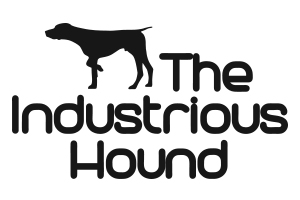Collars, harnesses and head collars
This blog is about harnesses and other equipment used to walk a dog on or off lead or to address a training or behavioural problem. A crash-tested harness or crate should be used to safely restrain a dog in a vehicle to prevent serious injury or death in case of hard braking or collision.
A good quality collar and lead is all you need to walk your dog. Your dog may need a martingale collar if it has a small head. You may need a muzzle if you feel you need more certainty about your dog's behaviour - but you may be able to address this behaviour with training.
I don't advise the use of harnesses, or muzzle or head collars to solve a behaviour problem, like pulling, for example. They are a quick fix, but don't tackle the underlying problems.
Here's my caveat: for some dogs in some situations, a nose or muzzle harness - sometimes called a Halti - is a useful and relatively gentle, quick and temporary fix that allows you to tackle more important problems. Think about the bigger picture of what you're trying to achieve and why. Consider not using a Halti once you've addressed the other more important problems, and learn other means of force-free control too to ensure you have a wide range of tools to use in different situations. Read this article for some more guidance on using Haltis.
'Choke chains', and collars with inward-facing barbs are based on negative reinforcement and are seldom fitted or used as intended in any case.
Harnesses can make pulling easier. They are also often designed with the assumption that the dog is always pulling forward. When the dog doesn't pull forward, the dog can easily slip the harness.
Harnesses are useful for some working dogs, like guide dogs, or search and rescue dogs that need to be easily lifted.
Extendable leads are a whole heap of problems on their own - they are dangerous, reinforce bad human habits and are completely unnecessary. I hate them!
What do head-collars and harnesses do?
Muzzle or head collars make the undesired behaviour uncomfortable, or even perhaps painful, by pulling the muzzle down and across when the dog pulls as a means to control behaviour.
If your dog lunges or runs to the end of the lead, a head collar can cause cause great discomfort or pain as the head is violently jerked to the side and back.
Chest harnesses do the same thing by increasing pressure between the front legs when the dog pulls. Depending on the harness construction, they may even give the dog more strength to pull - harnesses are used to help dogs pull sleds and carts, after all.
The behavioural concept of these devices - like choke chains - is to provide the dog with negative feedback (punishment) every time he pulls, and neutral feedback (neither positive or negative) when he doesn't pull.
These contraptions don't teach the dog where it is pleasant to be, they teach the dog where it is not pleasant to be.
Harnesses and muzzle collars are based on compulsion, not choice. They are designed to restrict, confine and compel.
While compulsion and restriction as a behavioural concept 'works', most people acknowledge that positive reinforcement is the best way to train dogs - and humans, for that matter - and most people unquestioningly use positive reinforcement to teach a dog to sit, for example.
As an extension of this concept, modern approaches to training talk about 'choice'.
'Choice' allows the dog to decide between at least two options, one of which is the preferred option - ideally preferred by you and the dog! So, applied to recall, for example, the dog might think 'of all the options open to me, I choose to return to you', or to walking 'I choose to walk alongside you because it is my best choice.'
The use of harnesses and muzzle collars also assumes that the dog is not in fact perversely 'rewarded' by what you assume is negative feedback. Or there may be other feedback - like verbal, eye or physical feedback. Dogs - and people - would often rather have negative feedback than no feedback at all.
With harnesses and muzzle collars, the dog learns to avoid negative reinforcement ('punishment') that can only happen when that form of collar is on. When the means of restraint and punishment is removed, the dog soon works out that the means of repressing the undesired behaviour is gone and makes other choices - to pull.
Using a harness or muzzle collar may make a rod for your back. If you haven't created a situation where the dog makes a positive choice to walk alongside you, It is more likely that the dog will never be able to be walked without some form of harness without pulling.
If you need help finding a humane alternative to harnesses, choke chains or head collars, get in touch!


